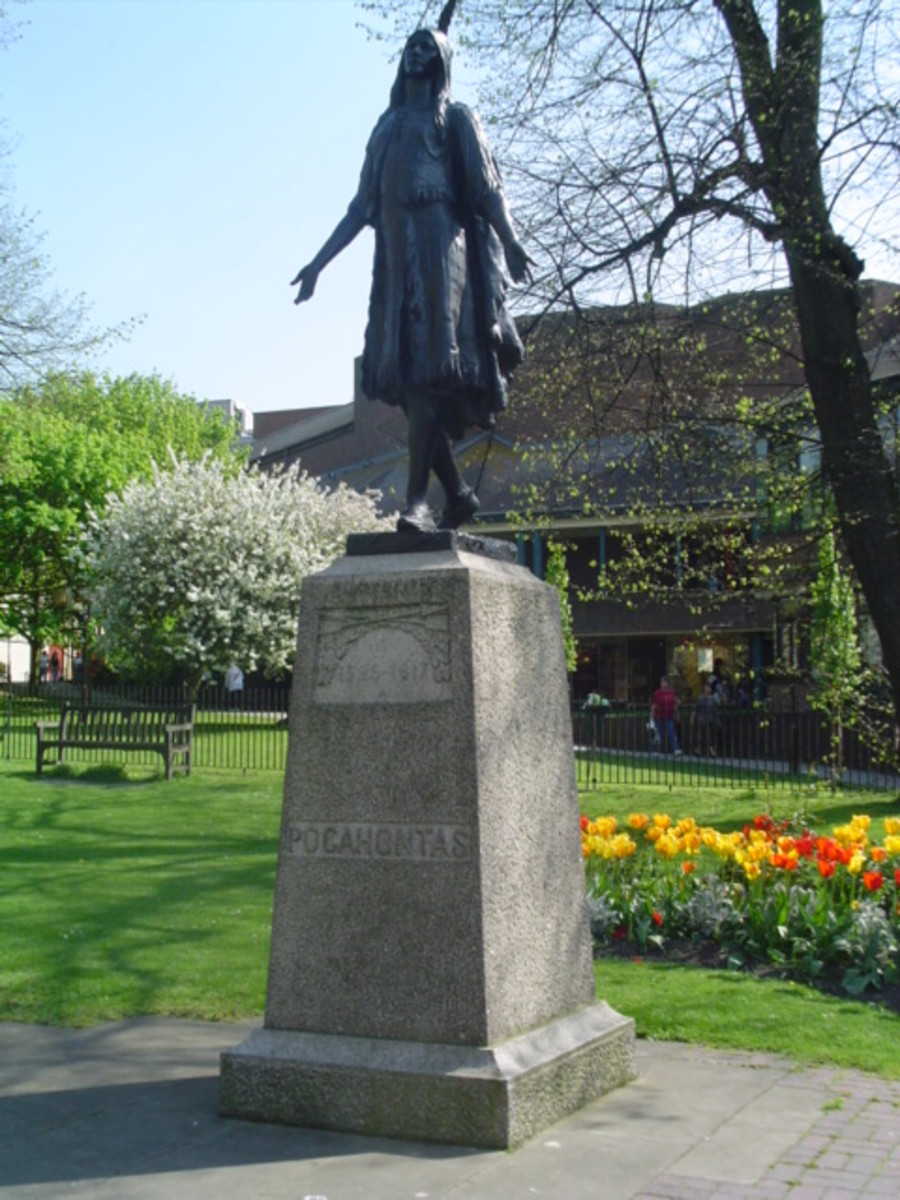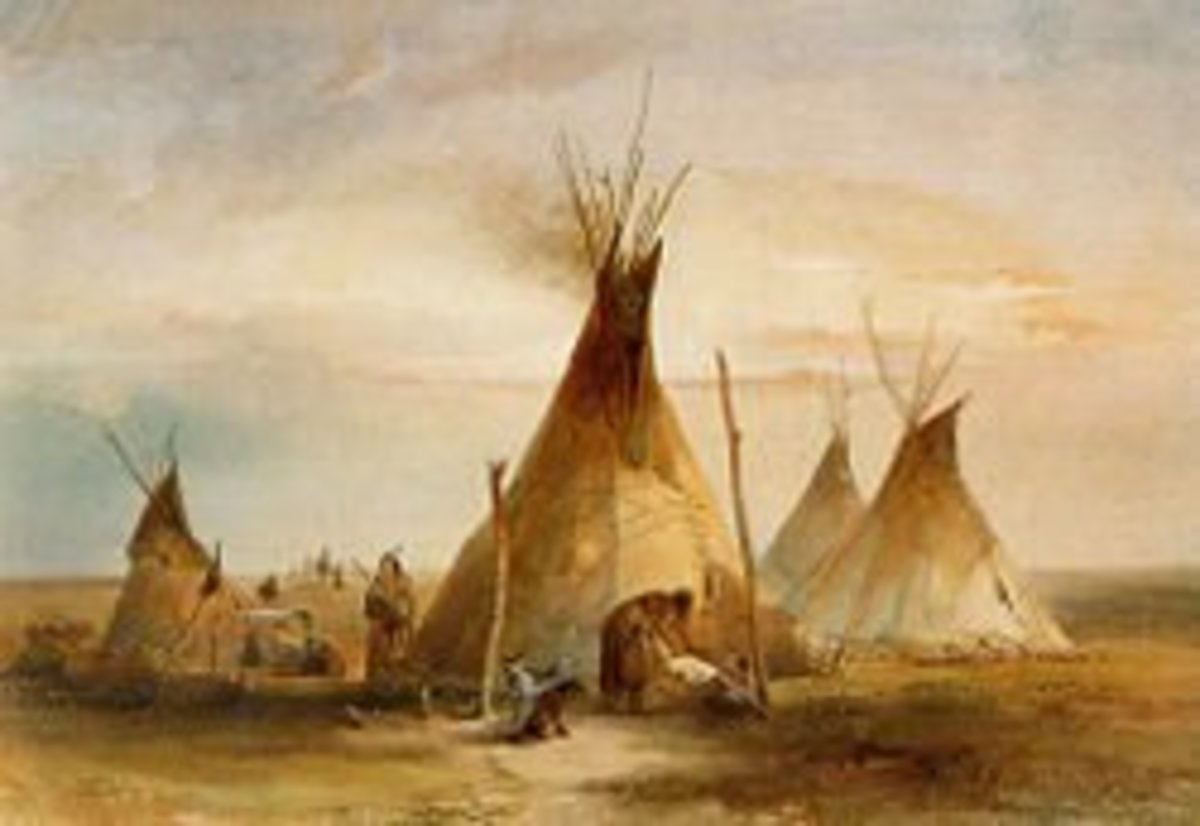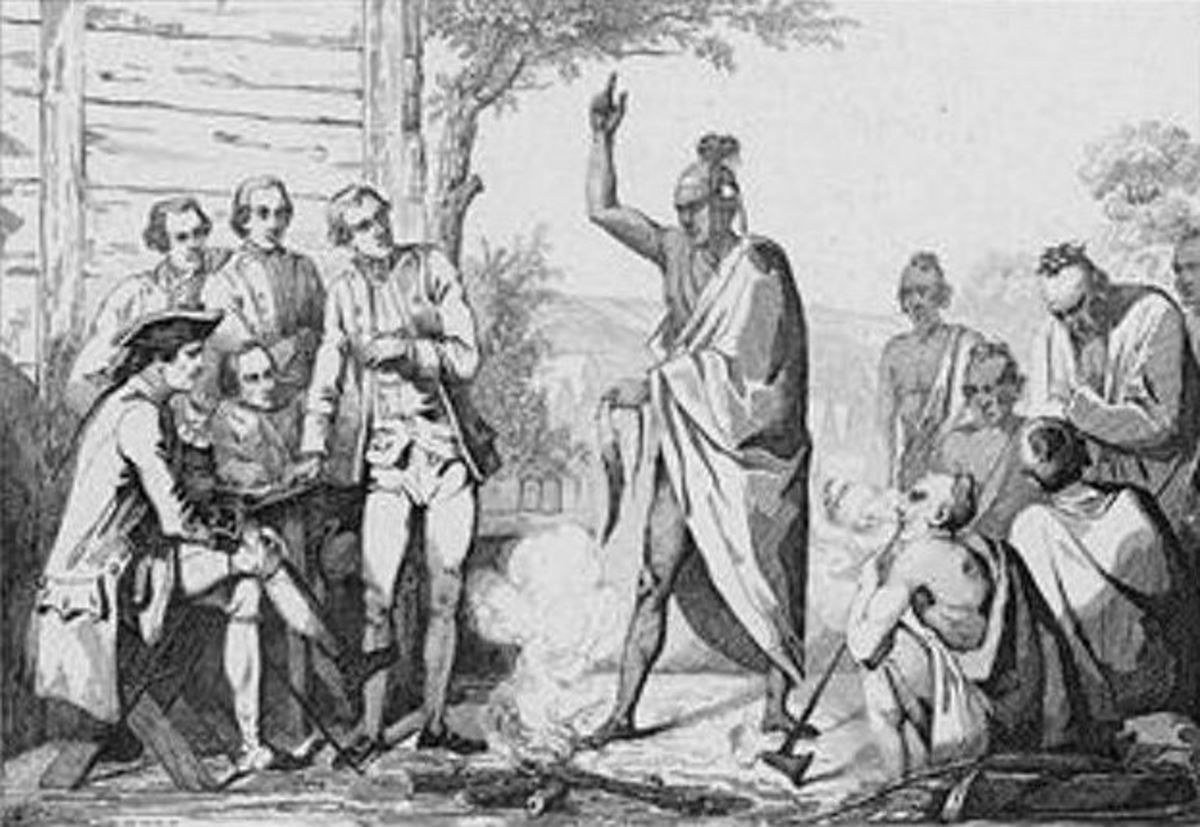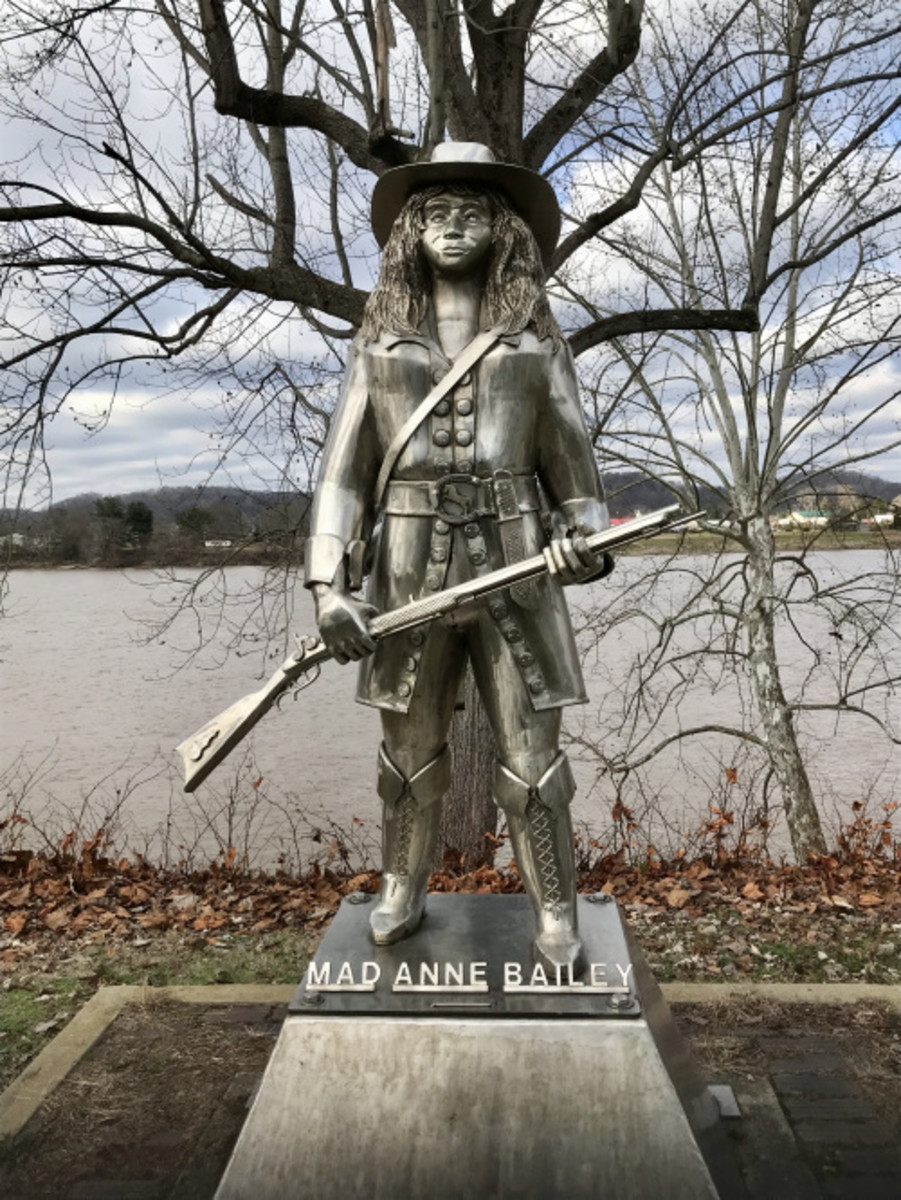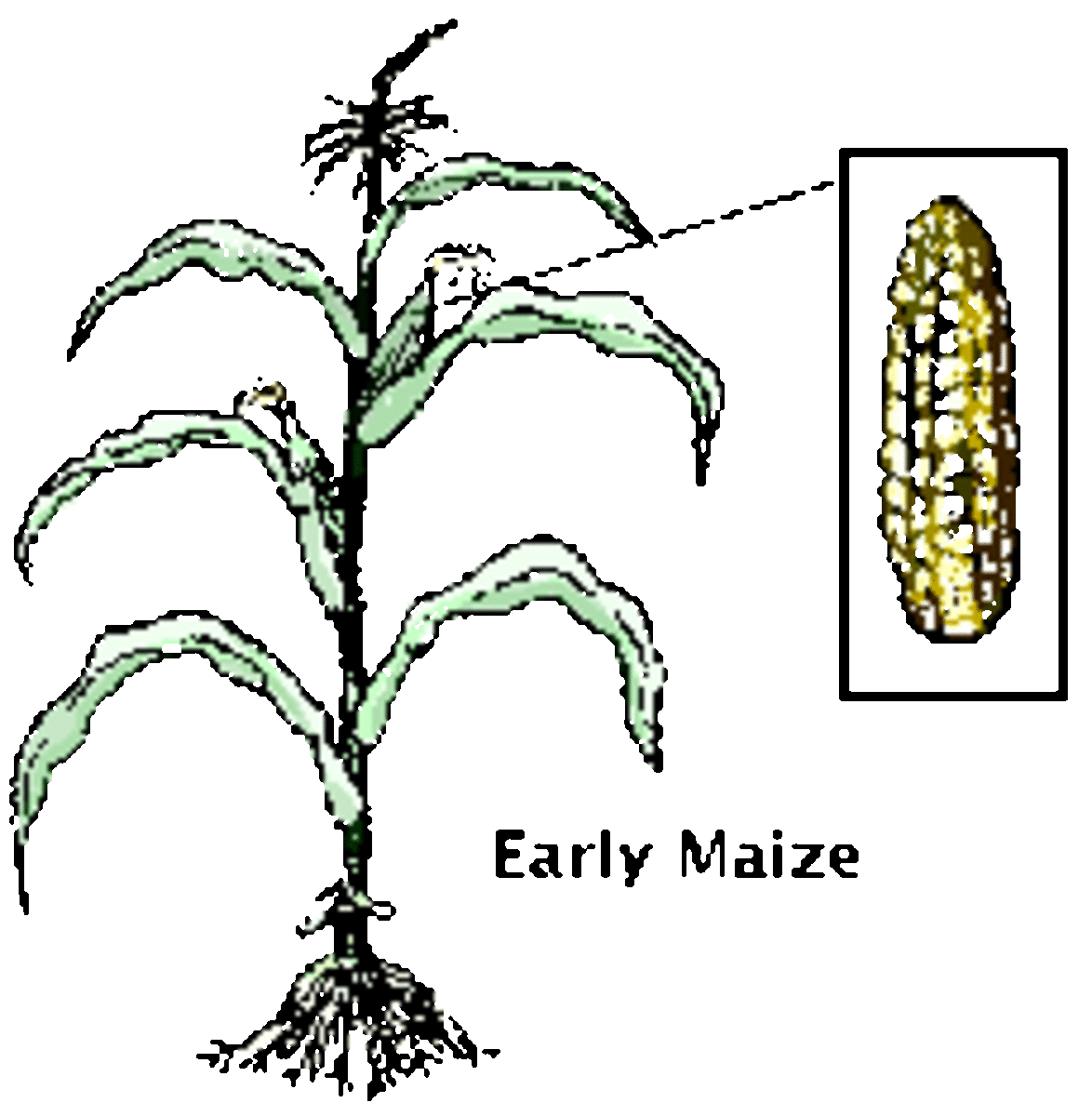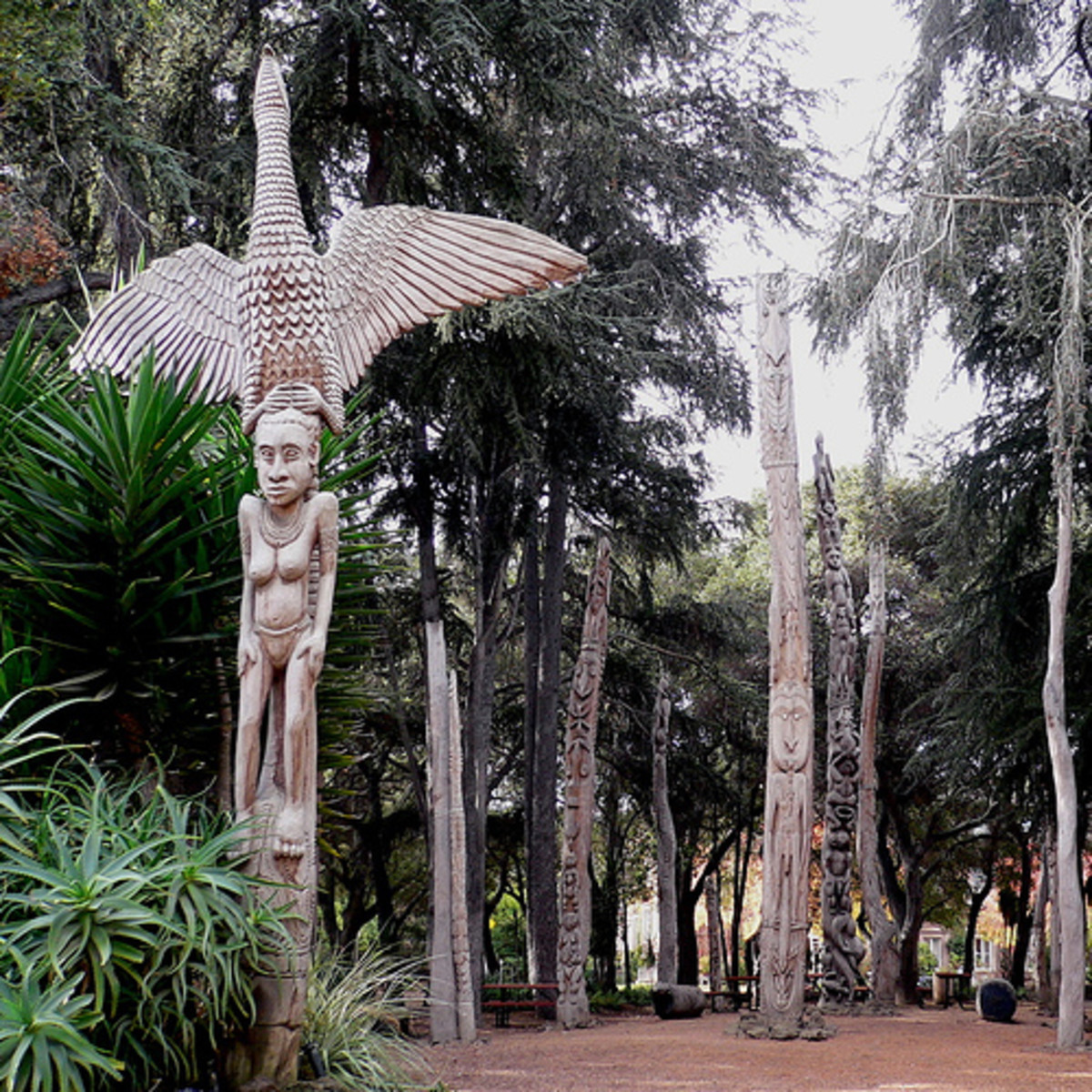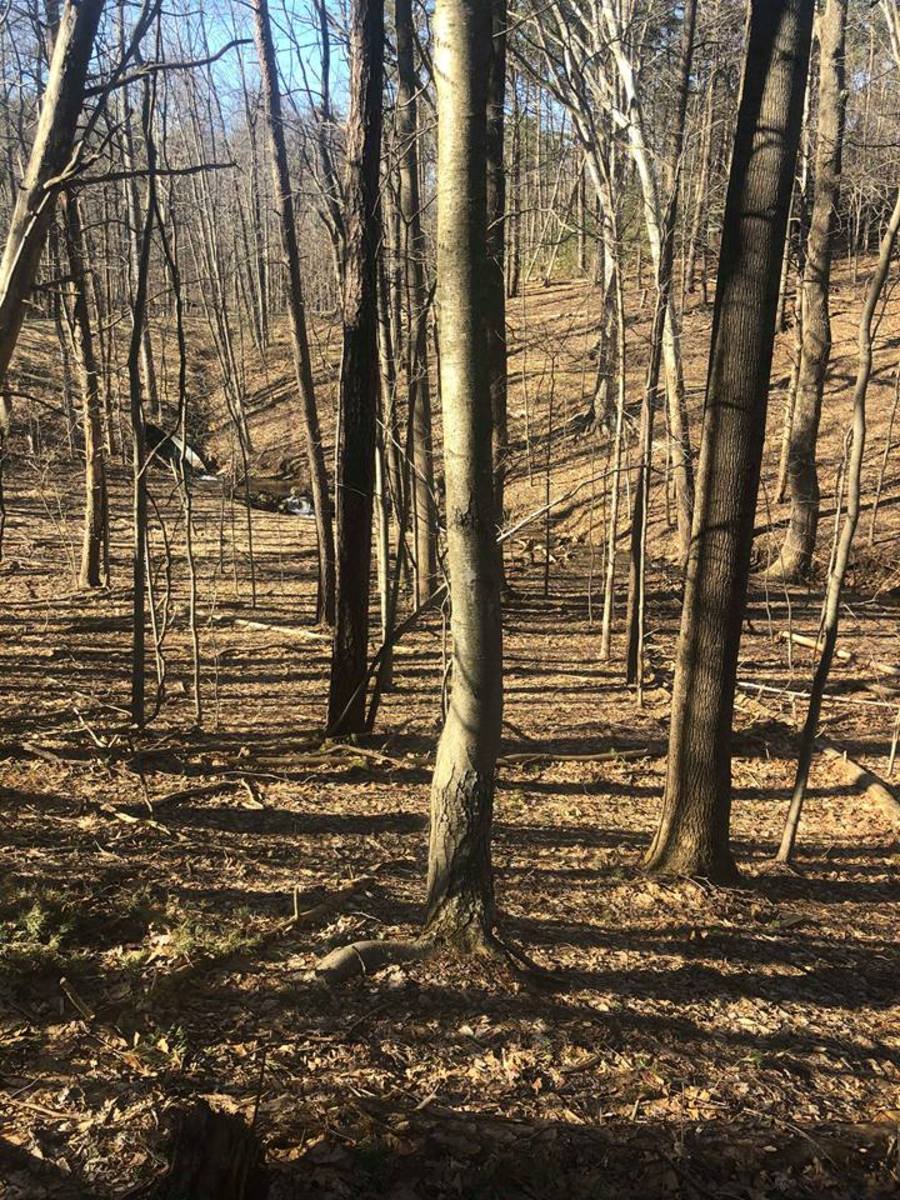- HubPages»
- Education and Science»
- History & Archaeology»
- History of the Americas
America, A Nation Blessed by God? Part Five
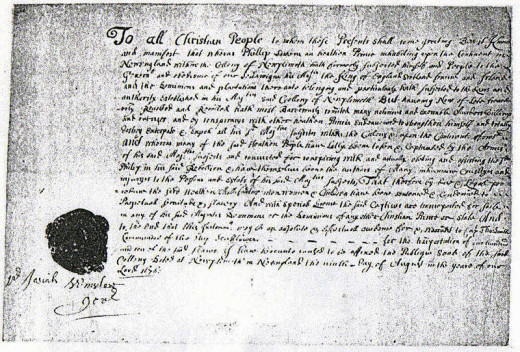
Slavery
In 1670 the English founded Charleston, South Carolina. Perhaps that statement should be clarified: the Sewee Indians already owned that land, but the English saw fit to claim it as their own. Charleston was built on the thriving trade in deer hides with the Sewee and other tribes. The Indians only received five percent of what buyers in England paid for the hides and they were determined to be treated fairly. The Sewee had seen the ships coming in from one direction and decided that was the way to England. They built large canoes, determined to travel to England and deal directly with them, eliminating the middle man. Months later they loaded the boats with hides and left. All able-bodies men and women went, but a storm blew up and most died. The survivors were rescued by a passing English slave ship and sold into slavery in the West Indies.
Indian slaves, deer hide and rum formed the basis of the southern colonial colony. In Charleston the slave trade began with the selling of Indians, who would be put on a block and be auctioned off. Most were sent to the Barbados, Bahamas, Jamaica and other places to work the sugar plantations. Life was brutal and short. As the Indian slaves succumbed to violence, disease and harsh working conditions, African slaves were imported to take their place.
Both Africans and Indians were treated as animals. The Roman Catholic Church had recognized the humanity of them, but most of the conquerors did not do so. Africans and Indians were treated like cattle or horses and were branded and chained them. As late as 1730 as many as a quarter of the slaves in the southern colonies were Indians.
William Apess, a member of the Pequot Tribe, as well as being a Methodist pastor, wrote:
“He that will advocate slavery is worse than a beast, is a being devoid of shame, and has gathered around him the most corrupted debasing principles in the world; and I care not whether he be a minister or member of any church in the world- no, not excepting the head men of the nation. And he that will not set his face against its corrupt principles is a coward and not worthy of being numbered among men and Christians- and conduct, too, that libels the laws of the country, and the word of God, that men profess to believe in.”
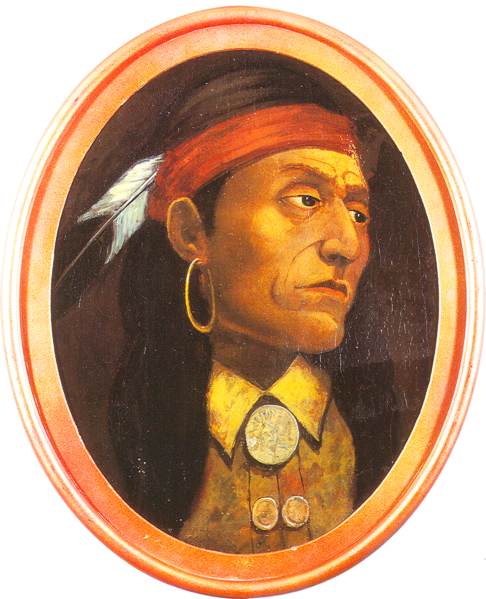
The French and Indian War and Pontiac's Rebellion
In the 1680s, when the Iroquois invaded the Ohio Valley, the Shawnees again scattered to the west and south. In 1683 several hundred Shawnees fled to Illinois, seeking refuge near Fort St. Louis, a French post on the Illinois River. The majority of the Shawnees, however, went south, along the Savannah River in Georgia and South Carolina. There they assisted the British against the Westoes, Cherokees, and other Indians.
Pennsylvania attracted many Europeans fleeing religious oppression in Europe. In 1711 so many Mennonites moved into the lower Susquehanna Valley that the Shawnees were forced to move their villages further up the river.
By the mid-1700s the eastern Indians were surrounded by Europeans. Spain controlled Florida, the English were pressing in from their colonies in the East, and the French were moving across the Great Lakes and along the Mississippi River.
The French and English established military outposts to support their trading ventures and solidify their claims to the land. In 1754 France and England clashed for control of the continent and Indian land was turned into violent battlegrounds.
The Shawnee were not fond of either the British or the French during these wars. They attempted to remain neutral, but still traded with certain British merchants. They eventually formed an alliance with the French and from 1755 to 1758 Shawnee war parties periodically attacked the frontiers of Pennsylvania and Virginia, burning cabins, taking scalps, and stealing livestock. Not receiving French support, the Shawnee formed alliances with the British.
The idea of land ownership was foreign to the Indians. In the Indian mind you couldn’t own the air, the sky, etc. For them it was “carving up our mother’s breast, parceling out the land and air above it.”
A Native American by the name of Teedyscung stated: "Tis plain that you white people are the Cause of this [French and Indian] War; why don't you and the French fight in the Old Country, and on the sea? Why do you come to fight on our land?"
When the colonists repeatedly broke treaties with the natives, Delaware Shamokin Daniel reported: "[They] come here only to cheat the poor Indian(s), and take their land…."
Most Indian nations joined the French because they weren’t out to claim Indian territory. On the other hand, the English were notorious for being colonists.
Although the Indians asked the British to keep the settlers east of the Appalachians, the British continued to move west. They soon occupied former French posts in Detroit, and other forts in Indiana and Michigan.
Trade with the Indians was restricted by the British. Sir Jeffery Amherst, hated Indians, and in 1761 ordered all British Indian agents to put severe limits on the amount of ammunition and provisions that they could furnish to the tribes. In his view, if the Indians needed arms and ammunition they could purchase them through the fur trade. Being communal, the Shawnees shared their possessions with those who needed it, and buying arms was viewed as an insult by the Indians. Being rich but refusing to share the wealth was violated their value system.
At one point the British demanded that they surrender all white “prisoners.” The problem was that many white prisoners had married into the tribe and preferred the Indian way of life and did not want to return. The Shawnee were persuaded to bring them back to the British posts anyways, but many escaped and returned to the Shawnee villages.
In 1760 the French shocked their Indian allies in the Ohio Valley and western Great Lakes by withdrawing from the region. The English army promptly moved into their abandoned forts.
In an address to an English trader named Alexander Henry, a Chippewa or Ojibwa chief named Minavavana, said “Englishman!--Although you have conquered the French, you have not yet conquered us! We are not your slaves. These lakes, these woods and mountains, were left to us by our ancestors. They are our inheritance, and we will part with them to none....”
Pontiac refused to abandon the struggle. He saw the English as a threat to all Indian people. Pontiac’s vision would change the face of Indian nations for generations. He formed an alliance with other tribes to unite against the British -- even tribes that had been enemies. He formed what became known as Pontiac’s Confederacy, made up of Miami, Seneca, Shawnee and other nations. On May 5th, 1763, he addressed hundreds of Ottawas, Huron and Potawatomis in Grand Council, calling for the total annihilation of the English:
"It is important for us, my brothers, that we exterminate from our lands this nation which seeks only to destroy us. You see as well as I that we can no longer supply our needs, as we have done, from our brothers, the French. The English sell us goods twice as dear as the French do ... When I go to the English commander and... ask anything for our sick, he refuses with the reply that he has no use for us...you can well see that they are seeking our ruin."
In May of 1763 war - what is now referred to as Pontiac’s Rebellion - erupted at the siege of Fort Detroit. Over a two month period nine of the eleven English forts in the region fell. Only Detroit and Fort Pitt remained in British hands.
The French were still in control in Louisiana, and promised Pontiac they would soon return to help him drive out the English once and for all. Unknown to Pontiac, France had already signed a treaty of surrender to England, ending all hostilities. Pontiac heard rumors about it in June but refused to believe the French wouldn’t respond to his victories.
The British were now able to concentrate on the Indians. Pontiac’s alliance held their ground. Jeffrey Amherst put a bounty on Pontiac’s head. He then launched a particular vicious attack by sending the Indians blankets laden with smallpox. Amherst wrote on June 29, 1763:
"Could it not be contrived to send the small pox among the disaffected tribes of Indians? We must on this occasion use every stratagem in our power to reduce them.”
Amherst also wrote on July 16:
"You will do well to inoculate the Indians by means of blankets, as well as every other method that can serve to extirpate this execrable race."
The Shawnee and Odawa were decimated by blankets from Fort Pitt.
It wasn’t until October that Pontiac received confirmation of the surrender by the French and called off the siege of Detroit. He then tried to rally his forces for another push the following spring. Unfortunately, it didn’t work because the English had falsely promised the Indians that English settlements would never be allowed on Indian land.
There were conflicts between the tribes over property. The Iroquois agreed to hand over all of Kentucky east of the Tennessee River after Pontiac’s Rebellion. The Shawnee, who hunted in the region, objected and formed allies with other tribes such as the Miamis, Mingoes and Wyandots.
In 1769 Pontiac was murdered.

